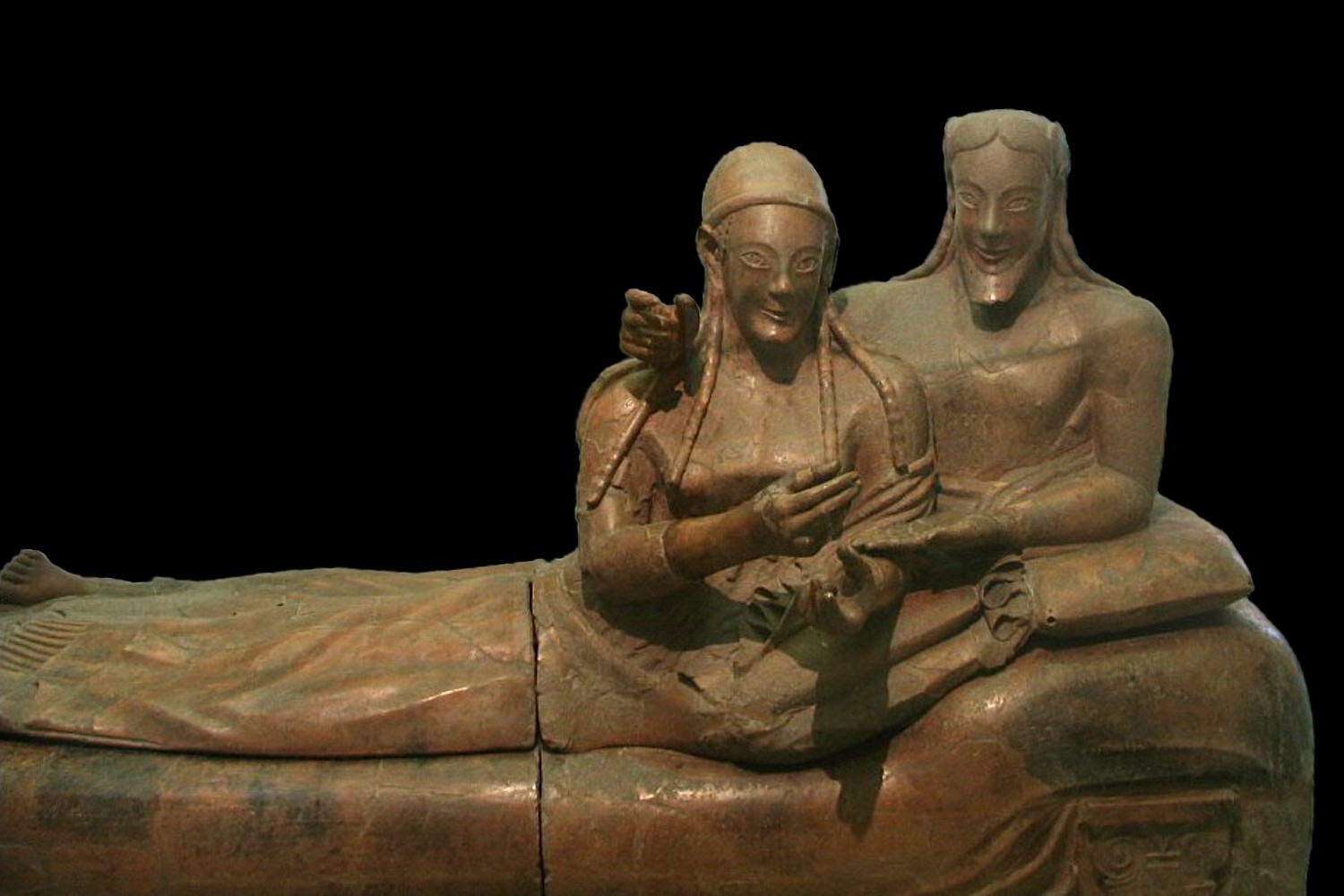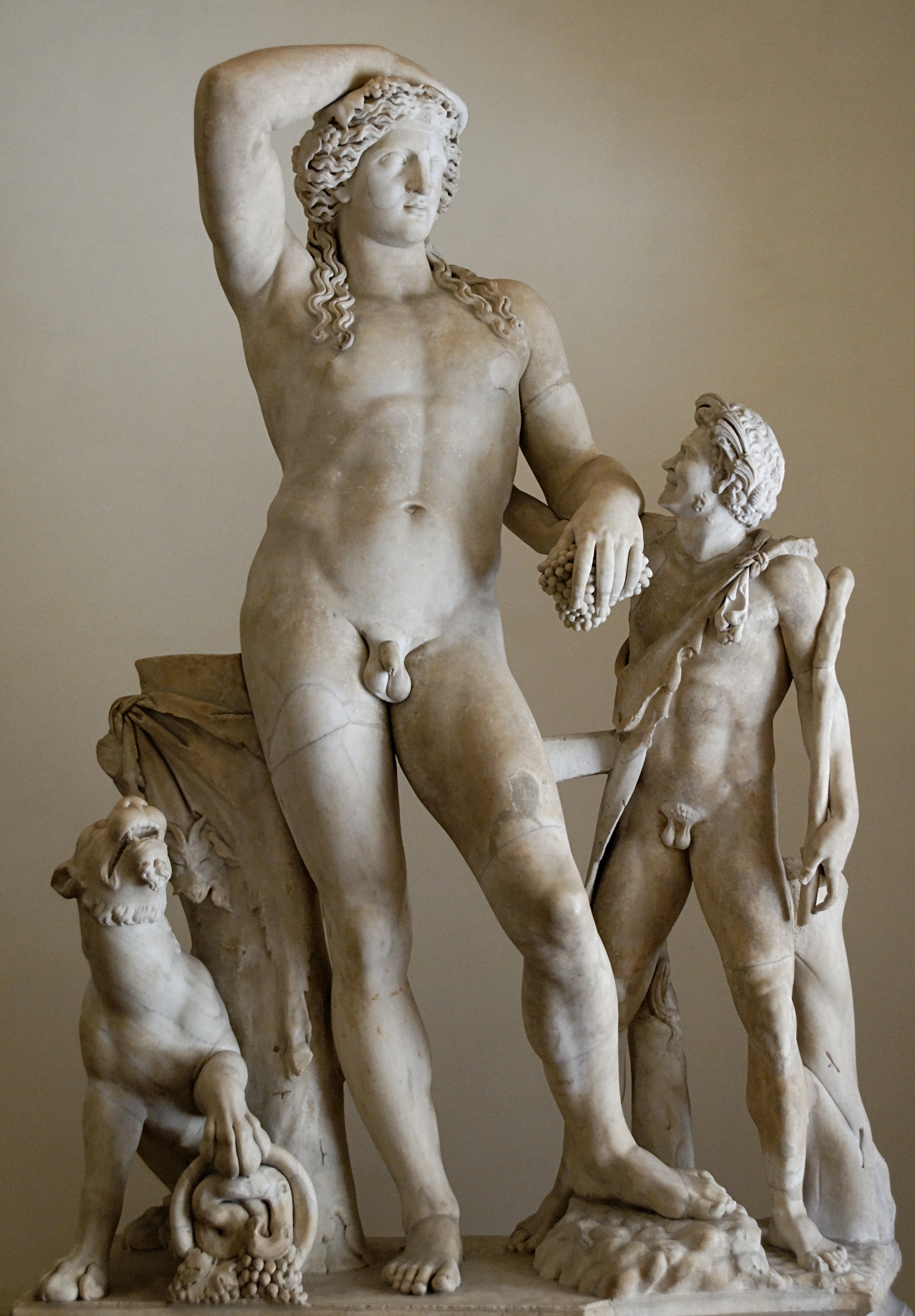|
Museo Nazionale Di Villa Giulia
The National Etruscan Museum ( it, Museo Nazionale Etrusco) is a museum of the Etruscan civilization, housed in the Villa Giulia in Rome, Italy. History The villa was built for Pope Julius III, for whom it was named. It remained in papal property until 1870, when, in the wake of the Risorgimento and the demise of the Papal States, it became the property of the Kingdom of Italy. The museum was founded in 1889 as part of the same nationalistic movement, with the aim of collecting together all the pre-Roman antiquities of Latium, southern Etruria and Umbria belonging to the Etruscan and Faliscan civilizations, and has been housed in the villa since the beginning of the 20th century. Collections The museum's most famous single treasure is the terracotta funerary monument, the almost life-size ''Bride and Groom'' (the so-called '' Sarcofago degli Sposi'', or ''Sarcophagus of the Spouses''), reclining as if they were at a dinner party. Other objects held are: * The Etruscan-Phoenic ... [...More Info...] [...Related Items...] OR: [Wikipedia] [Google] [Baidu] |
Terracotta
Terracotta, terra cotta, or terra-cotta (; ; ), in its material sense as an earthenware substrate, is a clay-based ceramic glaze, unglazed or glazed ceramic where the pottery firing, fired body is porous. In applied art, craft, construction, and architecture, terracotta is the term normally used for sculpture made in earthenware and also for various practical uses, including bowl (vessel), vessels (notably flower pots), water and waste water pipes, tile, roofing tiles, bricks, and surface embellishment in building construction. The term is also used to refer to the natural Terra cotta (color), brownish orange color of most terracotta. In archaeology and art history, "terracotta" is often used to describe objects such as figurines not made on a potter's wheel. Vessels and other objects that are or might be made on a wheel from the same material are called earthenware pottery; the choice of term depends on the type of object rather than the material or firing technique. Unglazed ... [...More Info...] [...Related Items...] OR: [Wikipedia] [Google] [Baidu] |
Museo Nazionale Romano
The National Roman Museum (Italian: ''Museo Nazionale Romano'') is a museum, with several branches in separate buildings throughout the city of Rome, Italy. It shows exhibits from the pre- and early history of Rome, with a focus on archaeological findings from the period of Ancient Rome. History Founded in 1889 and inaugurated in 1890, the museum's first aim was to collect and exhibit archaeologic materials unearthed during the excavations after the union of Rome with the Kingdom of Italy. The initial core of its collection originated from the Kircherian Museum, archaeologic works assembled by the antiquarian and Jesuit priest, Athanasius Kircher, which previously had been housed within the Jesuit complex of Sant'Ignazio. The collection was appropriated by the state in 1874, after the suppression of the Society of Jesus. Renamed initially as the Royal Museum, the collection was intended to be moved to a ''Museo Tiberino'' (Tiberine Museum), which was never completed. In 1901 the ... [...More Info...] [...Related Items...] OR: [Wikipedia] [Google] [Baidu] |
Museo Nazionale Del Palazzo Di Venezia
The Museo Nazionale del Palazzo di Venezia is a state museum in Rome (Italy), housed in the palace of the same name together with the important Library of Archaeology and Art History. Collections The Museum preserves paintings by artists such as Fra Angelico, Giorgione (''Double portrait'', about 1502), Giotto, Benozzo Gozzoli, Guercino, Carlo Maratta, Pisanello (''Head of a woman''), Guido Reni, Giorgio Vasari, Alessandro Algardi, Gian Lorenzo Bernini, as well as pastels, sculptures, bronzes, majolica, terracotta, western and oriental porcelain, medals, seals, furniture, weapons, ivories, silver, glass, enamels, fabrics and tapestries. It also preserves approximately 3,000 works from the Wurts Collection, which was formed by George Washington Wurts and Henrietta Tower and bequeathed to the Italian state on her death in 1933. The external loggia (Garden of Paul II) houses a lapidarium. The museum also hosts temporary exhibitions. Image gallery File:Giovanni di Francia, o ... [...More Info...] [...Related Items...] OR: [Wikipedia] [Google] [Baidu] |
Tarquinia National Museum
The Tarquinia National Museum ( it, Museo Archeologico Nazionale Tarquiniense) is an archaeological museum dedicated to the Etruscan civilization in Tarquinia, Italy. Its collection consists primarily of the artifacts which were excavated from the Necropolis of Monterozzi to the east of the city. It is housed in the Palazzo Vitelleschi. History The Palazzo Vitelleschi was built between 1436 and 1439 for the cardinal of Corneto, the former name of Tarquinia. After the cardinal's death the palace was used as stopover for the popes. Over time the Soderini family became its new owner and it was turned into a hotel. In 1900 it was acquired by the city of Tarquinia, which donated it to the Italian state in 1916. The state intended to use the palace for the current museum, which opened in 1924. It was the result of the merger of the Municipal Collection and the private collection of the counts Bruschi-Falgari. Over the time the collection was enriched by the numerous finds from the ancien ... [...More Info...] [...Related Items...] OR: [Wikipedia] [Google] [Baidu] |
Phoenician Metal Bowls
Phoenician metal bowls are approximately 90 decorative bowls made in the 7th–8th centuries BCE from bronze, silver and gold (often in the form of electrum), found since the mid-19th century in the Eastern Mediterranean and Iraq. They were historically attributed to the Phoenicians, but are today considered to have been made by a broader group of Levantine peoples. The first bowls published widely had been discovered by Austen Henry Layard in 1849 in the palace of Ashurnasirpal II at Nimrud. The discovery of these bowls began not just the known corpus of Phoenician metal bowls, but according to Nicholas Vella: "effectively gave birth to Phoenician art as a style, a definition with which historians of art still largely concur." They are foundational artefacts in the study of Phoenician art, together with the Nimrud ivories, which were discovered at the same time but identified as Phoenician a few years later.Richard David Barnett. �The Nimrud Ivories and the Art of the Phoenicians� ... [...More Info...] [...Related Items...] OR: [Wikipedia] [Google] [Baidu] |
Centaur Of Vulci
The Centaur of Vulci is a statue of the Etruscan Orientalising period, discovered in Vulci near Etruscan Viterbo, now in the collection of the National Etruscan Museum of Villa Giulia in Rome. History The statue was discovered in a private tomb in the necropolis of Poggio Maremma in Vulci Archaeological Park. Description This nenfro statue dates from 590-580 BC. It represents a centaur, a character from Greek mythology A major branch of classical mythology, Greek mythology is the body of myths originally told by the Ancient Greece, ancient Greeks, and a genre of Ancient Greek folklore. These stories concern the Cosmogony, origin and Cosmology#Metaphysical co ... with a human torso and a horse's body. The head, with an incised beard and hair falling into three braids on the upper legs, gives way to a brief chest and an equine body which lacks a tail. The arms are missing and also the legs below the knees; hands are visible on the hips. File:Centaure de Vulci 02.JPG Fi ... [...More Info...] [...Related Items...] OR: [Wikipedia] [Google] [Baidu] |
Tita Vendia Vase
The Tita Vendia vase is a ceramic impasto pithosBaccum, p. 583. (wine containerBaldi, p. 126.), made around 620-600 BC, most likely in Rome). The ''pithos'', which exists only as an incomplete set of sherds, carries one of two earliest known inscriptions in Latin language (the ''Vendia inscription'') and is usually, but not unanimously, interpreted as the earliest instance of a bipartite female Latin name with praenomen and gentilicum. The sherds of the vase were found by Raniero Mengarelli and deposited in the collection of Museo di Villa Giulia. The exact location of the find is unknown but it probably occurred in Cerveteri (ancient Caere). The vase belongs to a type found in Southern Etruria. In its original form, based on the collection of sherds found, it was likely to have been approximately 35 centimetres tall and 45 centimetres wide. The letters, 15 to 25 millimetres tall, had been scratched near the bottom. They were inscribed by a right handed artisan, using reversed ... [...More Info...] [...Related Items...] OR: [Wikipedia] [Google] [Baidu] |
Melanippus
:''The name Melanippus is the masculine counterpart of Melanippe.'' In Greek mythology, there were eleven people named Melanippus (): *Melanippus, one of the sons of Agrius and possibly Dia, daughter of King Porthaon of Calydon. Along with his brothers, except Thersites, he was killed by Diomedes. *Melanippus or Menalippus, brother of Tydeus and thus possible son of Oeneus, king of Calydon and Periboea. He was accidentally slain by Tydeus during a hunt. In some accounts, the murdered brother of Tydeus was called Olenias. *Melanippus, son of Perigune and Theseus, the father of Ioxus who, together with Ornytus, led a colony to Caria and became the ancestor of the family Ioxides. *Melanippus, sometimes misspelled "Menalippus", son of Astacus (hence referred to by the patronymic ''Astacides'' in Ovid), defender of Thebes in Aeschylus' play ''Seven Against Thebes''. In the play, he defended the Proitid gate against Tydeus. He killed two of the seven attacking champions, Mecisteus an ... [...More Info...] [...Related Items...] OR: [Wikipedia] [Google] [Baidu] |
Tydeus
Tydeus (; Ancient Greek: Τυδεύς ''Tūdeus'') was an Aetolian hero in Greek mythology, belonging to the generation before the Trojan War. He was one of the Seven against Thebes, and the father of Diomedes, who is frequently known by the patronymic ''Tydides''. Life Tydeus was a son of Oeneus and either Periboea, Oeneus's second wife, or Gorge, Oeneus's daughter. He was the husband of Deipyle, the mother of Diomedes. Tydeus was banished from Calydon by his uncle Agrius, because he killed either his brother or a different uncle or six of his cousins. He travelled to Argos, where he married Deipyle, daughter of king Adrastus. Seven against Thebes Gathering of the Seven While housing Tydeus, King Adrastus of Argos also lodged Polynices, the exiled son of Oedipus who had shared the rule of Thebes with his brother Eteocles before he was expelled by the latter. Late one night, the two young exiles got into a fierce dispute over the guest room in Adrastus's palace. Awakened by ... [...More Info...] [...Related Items...] OR: [Wikipedia] [Google] [Baidu] |
Cista
A cista is a box or basket used by the ancient Egyptians, Greeks, Etruscans and Romans for various practical and mystical purposes. Purpose and usage The ''cista'' or ''cistella'' was at first thought be a wicker basket used for holding fruits and vegetables and for general agricultural purposes. Although these baskets were sometimes square, they were more often cylindrical in shape. Over time, ''cista'' came to mean a smaller box or casket employed for a variety of purposes. This distinguished it from the larger ''area'' or chest; on rare occasions, it may have been used in referring to a ''capsa'', or book-box. The cista believed to be in the private treasure of Gaius Verres may have been a money-box. In the Roman ''comitia'', the cista was the ballot-box into which the voters cast their ''tabellae''. The form and material of the voters' cista, evidently of wicker or similar work, is represented in an annexed cut from a coin of the Cassia gens. In this sense, the cista has of ... [...More Info...] [...Related Items...] OR: [Wikipedia] [Google] [Baidu] |

.jpg)



